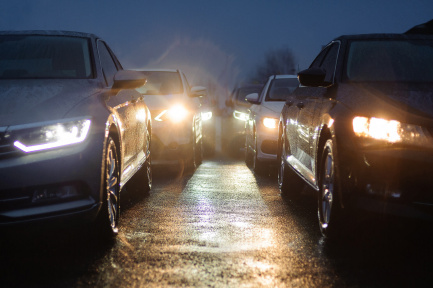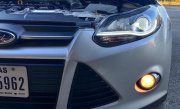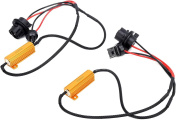
High beams and low beams are used for different purposes and should be used accordingly. Your driving experience will be much safer and more enjoyable if you know when to use each. Besides, your high beams might just save you from a deer or other nocturnal obstacles on the road. So, what are its purposes, and how to use it properly?
When to use high beam headlights?

Every state in America has different laws about when to use your high beams, but they all generally follow the same idea. You should only have your high beams on when there is no one else around for a long distance. This means that if you're driving on a rural road with no other cars, you can keep your high beams on the entire time. However, as soon as you see another car coming from either direction, you should turn off your high beams so you don't blind the other driver.
The distance is a bit different in every state, but they must not be utilized closer than 500 feet from an approaching automobile or closer than 200-300 feet to another vehicle you are following. Such a short distance can cause a driver to be momentarily blinded, and this can result in an accident.
You should also dim your high beams when you're driving in rain, fog, or snow. The light reflection from these conditions can make it difficult for other drivers to see. High beam headlights are not only used at night. You can use them during the daytime as well if there is little to no traffic around. This is especially useful when you're driving on a long stretch of highway with few exits.
When it`s low visibility in urban areas like when it`s dusk or dawn, you should use your low beams. The light from high beams can reflect off the windows of buildings and blind oncoming traffic. It can also interfere with traffic signals and signs. In general, drivers must dim them within 200 to 300 feet of vehicles they are following, approaching vehicles within 500 feet, and within 500 feet of pedestrian crossings, intersections, and railway crossings.
High beams should never be used when there is oncoming traffic, regardless of the time of day or night. If you're blinded by another driver's high beams, you can temporarily lose control of your vehicle. This could lead to an accident.
As for rural areas, high beam headlights should only be used when there is no oncoming traffic. If you do come across oncoming traffic, you should dim your headlights as soon as possible. It's also a good idea to turn off your high beams when you're driving behind another vehicle. This will prevent the other driver from being blinded by your headlights.
Should you always use high-beam headlights?
Only use your high-beam headlights when driving at night if there are no other vehicles around you; switch to low-beam headlights if you're behind or being followed by another car, or if there is an oncoming vehicle.

Instead, motorists should use low-beam headlights when they are within 500 feet of an oncoming vehicle, following another vehicle within 300 feet, or approaching a car from behind within 200 feet. It is also advisable—and sometimes required by law—to dim your headlights when driving in fog, rain, or snow. The light from high beams can reflect off the water droplets and flakes and blind other drivers.
When should you avoid using high beams?
When driving in fog, rain, or snow, don't use your high beams. They may make your vision even worse in these situations. High beams will illuminate the fog or rainfall directly, which will cause it to reflect the bright light back toward you. Snowflakes and ice crystals reflecting additional light onto you during a snowfall can be deadly. The harmful consequence is a wall of glare, making it increasingly difficult for you to see the road ahead of you.
Moreover, using high beams in urban areas is not advised. The light from high beams can reflect off the windows of buildings and blind oncoming traffic. It can also interfere with traffic signals and signs.
What lights should I use at night?
Dipped headlights are your car's brightest lights that won't affect the vision of other drivers. Remember, use them whenever visibility is restricted such as at dusk or night time, and when it's storming. Move up to main beam headlights only when you can't see any other cars ahead of you.
When you've switched your headlights on, you may notice a blue light on your dashboard. This means that your car is running low on dipped beam headlight fluid. Check the level and top up if necessary - it's usually easy to do so by opening the bonnet and finding the reservoir. If you're not sure how to do this, refer to your car's handbook.
If you use your main beam headlights when there's oncoming traffic, you'll dazzle the other driver and make it difficult for them to see the road ahead. Dazzling can also occur when there's traffic ahead of you, so use a dipped beam in these situations too.
What are low beam lights for?
Low beam headlights illuminate roughly 50 to 75 meters in front of your car. Low beam headlights, unlike daytime running lights, not only make you more visible to others but also enhance your visibility at night, twilight, rain, snow, and fog.

Low beams are used for most nighttime driving. You should use your low beams when you can't see more than 400 feet in front of you. You should also use your low beams when there's oncoming traffic within 500 feet, or when you're following another car within 300 feet. When using your low beams, don't forget to dim your instruments and controls so they don't reflect into your eyes.
Now that you know when to use dipped headlights and main beam headlights, put them to good use and stay safe on the roads at night!
What type of bulb is better for high beams?
There are LED, halogen, and xenon bulbs available for high beams. All three have their pros and cons, so it really comes down to personal preference.
LED bulbs are becoming more popular because they use less energy than halogen or xenon bulbs. They also last longer, so you won't have to replace them as often. However, LED bulbs can be more expensive than other types of bulbs. Halogen bulbs are the most common type of bulb used in high beams. They're relatively inexpensive and easy to find, but they don't last as long as LED or xenon bulbs. Xenon bulbs are the brightest type of bulb available for high beams. They provide the best visibility, but they're also the most expensive option. For high beam headlights, we recommend using LED or xenon bulbs because they are the brightest and will provide the best visibility.
There are also some things to keep in mind when using high beams. First, don't use them in fog or rain because they will reflect off the water and actually make your vision even worse. Second, don't use them in urban areas because the light can reflect off buildings and blind oncoming traffic. Finally, be sure to dim your instrument panel so it doesn't reflect into your eyes.
Now that you know all about high beam headlights, be sure to use them safely and responsibly!
Bottom line
All right, now you know everything there is to know about high beam headlights! Be sure to use them safely and responsibly, and always keep an eye out for oncoming traffic. Depending on the state, tail lights must be used when an automobile is within 500 feet or when following another vehicle at a distance of 200-300 feet.








